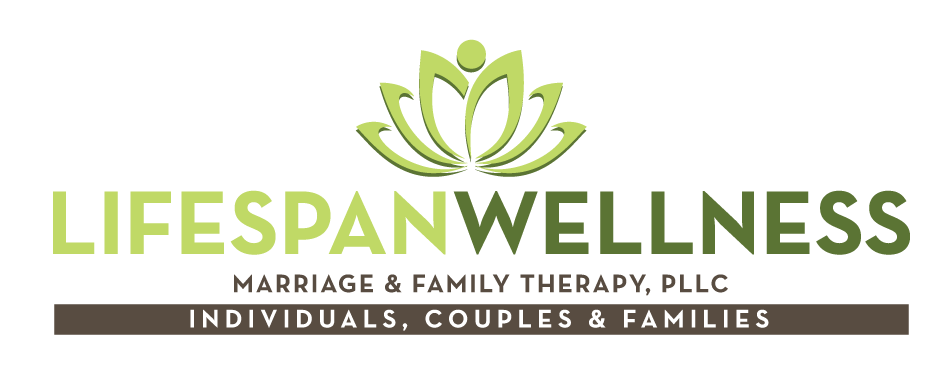First Question: What does “mental health” mean to you?
Mental Health, as defined by the Centers for Disease Control and Prevention (CDC), “includes our emotional, psychological, and social well-being” and “affects how we think, feel, and act, and helps determine how we handle stress, relate to others, and make choices” (2023). Pretty comprehensive, right?
To be more concise, mental health influences and affects every part of our life, including our inner state, every relationship we have in our world, and overall quality of our life.
Health is a large and multifaceted concept. When I explain health, I ask people to imagine a triangle, and each of the three points represents three main interrelated parts: physical, emotional, and social/relational health. Each part influences, affects, and is affected by the other two parts, and it’s important to attend to all of them to attain and sustain overall health and wellbeing. From a nursing perspective health also includes the influence of social determinants of health, which is not to be confused with social relationships, but defined as 5 domains of “conditions in the environments where people are born, live, learn, work, play, worship, and age that affect a wide range of health, functioning, and quality-of-life outcomes and risks” (Office of Disease Prevention and Health Promotion, 2022).
Mental health in particular focuses on the role that our thoughts and brain processes have in influencing our beliefs and decision making, and the actions that we do or don’t take that affect our physical, emotional, and social/relational wellbeing. How mental health issues are addressed are influenced by whether the support is available and implemented as prevention (primary prevention), as screenings and detection of areas of concern in the earliest stages and intervention to address or repair in the earliest stages (secondary prevention), or as efforts to contain and manage original problems and their sequelae to slow or prevent further damage (tertiary prevention). Many sources speak to the interrelatedness between these facets of health and chronic conditions – including medical conditions such as diabetes, cardiovascular problems and stroke, and psychological and psychiatric conditions that include anxiety, depression, and psychosis – and the necessity of a holistic approach to treatment that integrates physical, emotional, and social/relational health interventions.
Second Question: How can we care for and attend to our mental health, in any stage of prevention or intervention?
As the CDC (2023) states, “mental health is important at every stage of life, from childhood and adolescence through adulthood.” The purpose and goal of health practices are to achieve and maintain a state of wellness, and Dr. Margaret Swarbrick’s Wellness Model recognizes 8 dimensions that are key contributors to health and wellbeing.
These 8 dimensions of wellness are:
- Emotional: Includes the navigation and management of concurrent feelings within ourselves and in interactions with others
- Environmental: The conditions of the spaces that we live in, work in, and spend time in
- Financial: Economic stability and the ability to afford what is needed and wanted for the present and the future
- Intellectual: Discovering and expanding cognitive and creative abilities and applying knowledge and skills
- Occupational: Personal satisfaction and enrichment from one’s work
- Physical: Maintaining body and biochemical functioning through sleep, good nutrition, dental and body hygiene, medical visits and support, and physical activity
- Social: Developing a sense of connection and belonging, and having a good support system
- Spiritual: Expanding one’s conceptualizations and definitions of meaning and purpose, moral and ethical values, transcendence, connection with self, others, higher powers, and nature, and becoming (one’s growth and progress in life) (Ghaderi, et. al., 2018).
The good news is that one activity can support more than one health and wellness dimension. An example of this could be learning how to make our own meals: we have coordinated physical movements, intellectual cognitive and creativity, emotional satisfaction and good feelings from the aromas, and social/relational if we want to share it with friends and family.
The great news is that even small efforts can have large, positive impacts on our current and future physical, emotional, and social/relational health. First steps can include taking online assessments and/or meeting with your doctors and getting a mental health and physical health check up to see what your health status is now. Next steps may include making some changes in personal regimens and behaviors, and connecting with health specialists, psychotherapists, and community programs to gain knowledge and skills to integrate into your daily life.
Some small yet positive adjustments that you can make include:
- Establishing a healthy sleep-wake schedule and planning out your day
- Cleaning out the fridge and your living space; keep what sparks joy and toss the things that don’t
- Take a class that can help advance your skills and eventually your paycheck (free and low cost options are available, check social calendars for community workshops and college classes near you)
- Go to a bookstore or studio and explore your interests, for fun, for advancing your career, or a side job
- Listen to podcasts that promote learning and using healthy coping skills and emotional regulation
- Join a club or explore volunteer work that gives you the greatest opportunity to spend time with people who have similar interests
What makes you smile when you think about exploring your possibilities and options? Start there.
*
For more information about the 8 dimensions of wellness, why it’s important and how the model can be empowering, visit the Substance Abuse and Mental Health Administration (SAMHSA)’s page here (Kobrin, 2017).
For more information about how I use the 8 dimensions of wellness in my psychotherapy practice, visit my Instagram page @lifespanwellnessmft
Thanks for reading!
—-
References:
Centers for Disease Control and Prevention. (2023, April 25). Learn About Mental Health – Mental Health – CDC. Www.cdc.gov. https://www.cdc.gov/mentalhealth/learn/index.htm#:~:text=Mental%20health%20includes%20our%20emotional
Ghaderi, A., Tabatabaei, S. M., Nedjat, S., Javadi, M., & Larijani, B. (2018). Explanatory definition of the concept of spiritual health: a qualitative study in Iran. Journal of Medical Ethics and History of Medicine, 11(3). https://www.ncbi.nlm.nih.gov/pmc/articles/PMC6150917/#:~:text=Five%20characteristics%20of%20spirituality%20include
Kobrin, M. (2017). Promoting wellness for better behavioral and physical health. Mfpcc.samhsa.gov. https://mfpcc.samhsa.gov/ENewsArticles/Article12b_2017.aspx
Office of Disease Prevention and Health Promotion. (2022). Social determinants of health. Healthy People 2030; U.S. Department of Health and Human Services. https://health.gov/healthypeople/priority-areas/social-determinants-health
@ Copyright 2023 Lifespan Wellness Marriage and Family Therapy, PLLC.
Maria Constantinou is a Licensed Marriage and Family Therapist with a private practice in Queens, New York. For more blog articles, and information about Lifespan Wellness Marriage & Family Therapy PLLC’s practices, visit https://lifespanwellnessmft.com/ and follow updates on Facebook and Instagram. Questions or comments about blog articles can be directed to Maria Constantinou, LMFT at lifespanwellnessmft@gmail.com.
The preceding article was solely written by the author named above for informational purposes. Please consult with your medical provider(s) regarding any health issues you may be experiencing.
Photo credit belongs to original photographer. Lifespan does not claim any credit for this photo.
Questions or comments can be directed to Maria Constantinou, LMFT at lifespanwellnessmft@gmail.com

